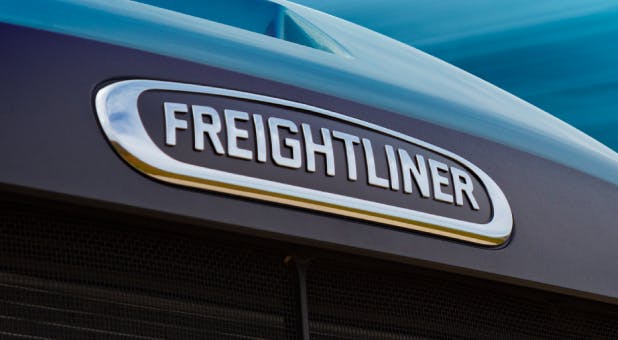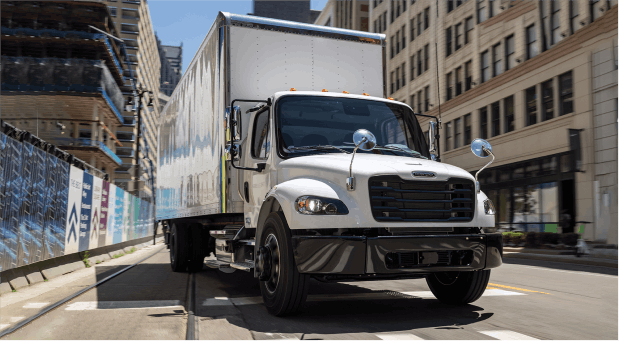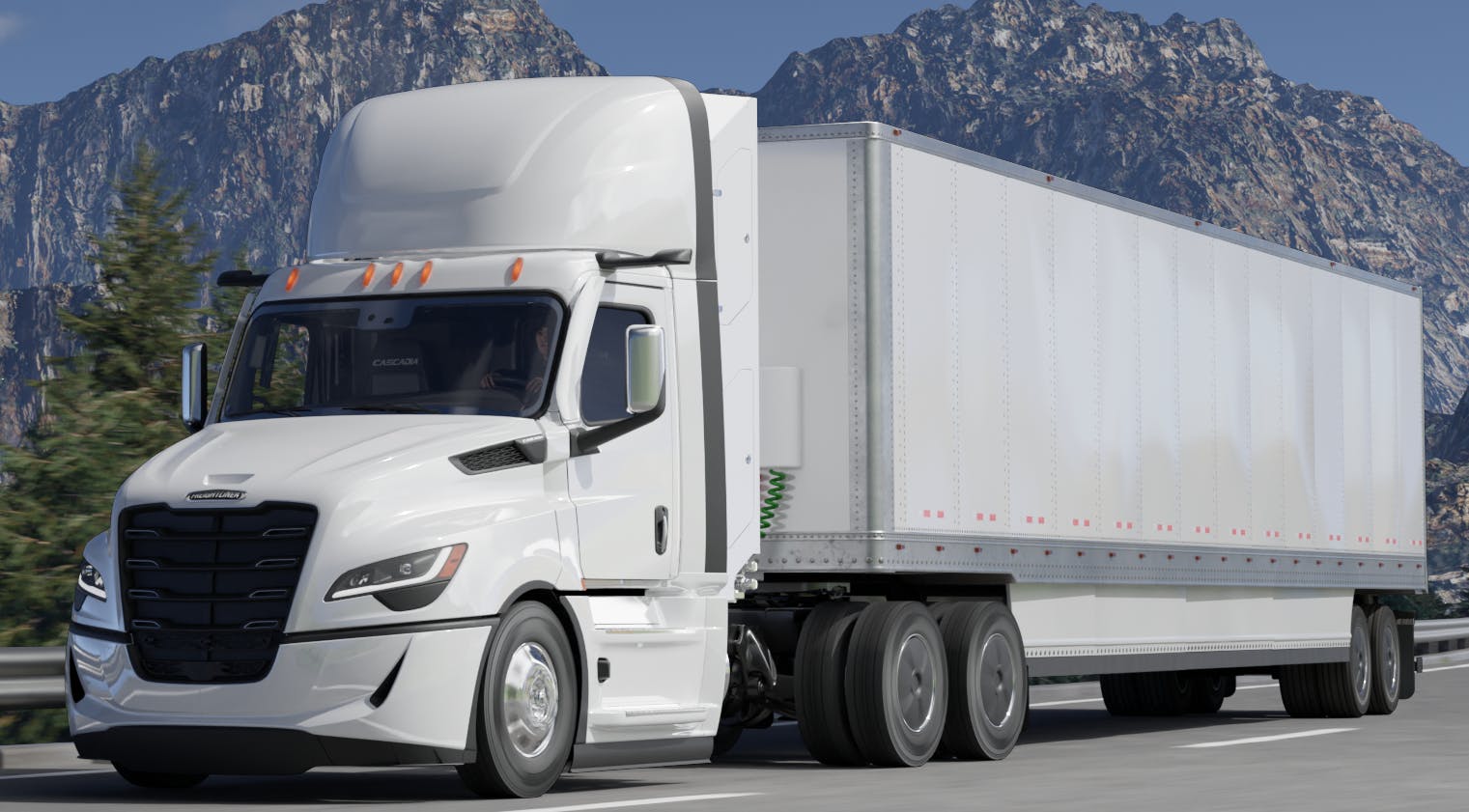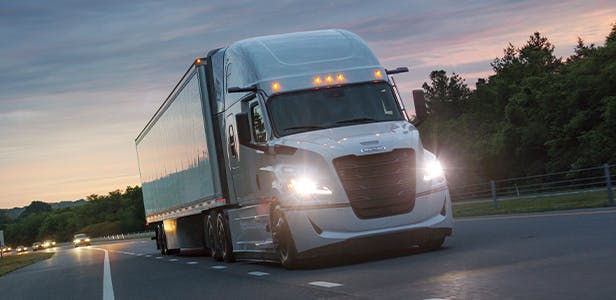Revolutionizing Efficiency: The Engineering Journey Behind SuperTruck II
Freightliner Fuel Efficiency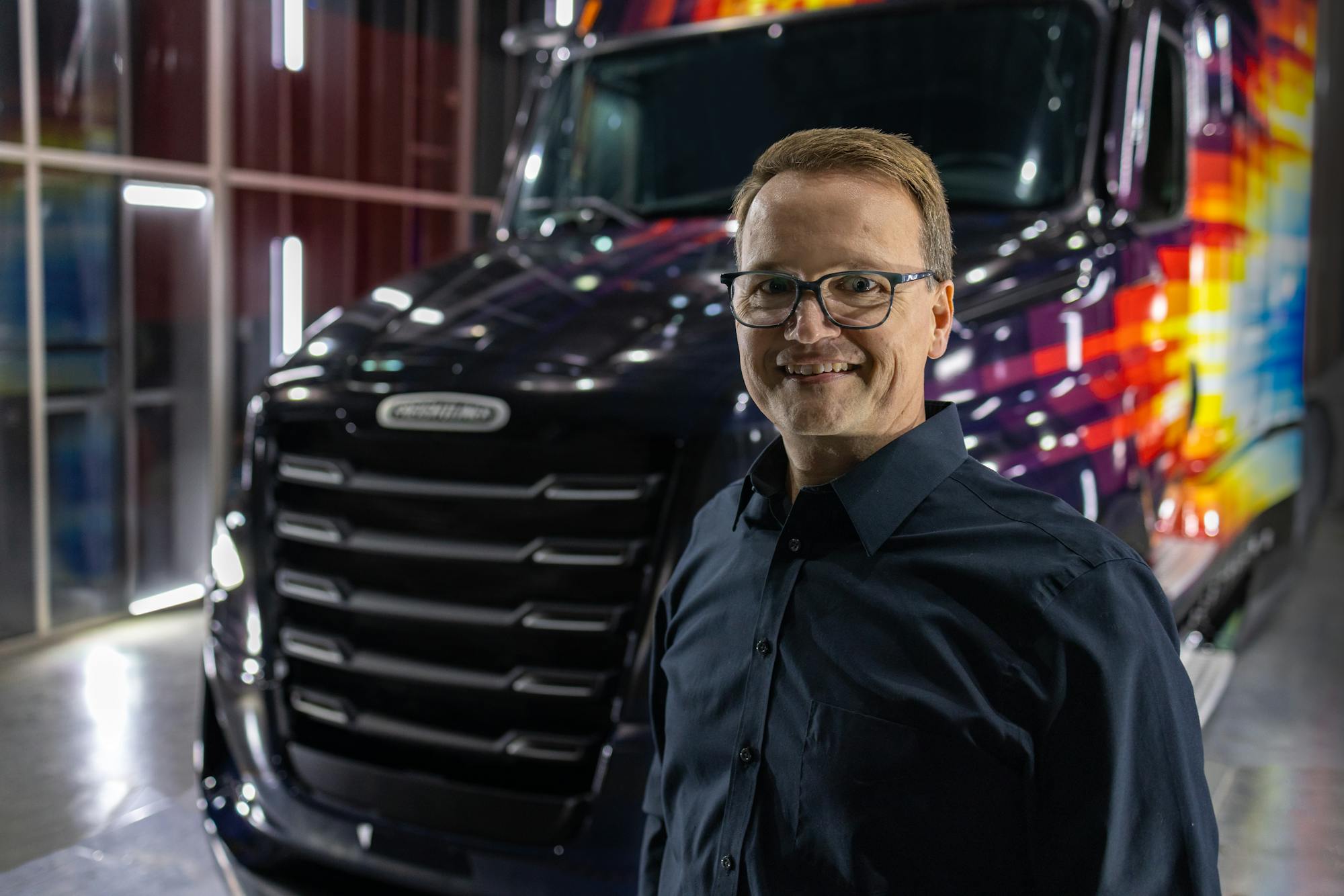
In the world of heavy-duty trucks, the pursuit of efficiency isn't just a goal; it's a driving force shaping the future of transportation.
Engineered to be a leader in transformation, the Freightliner SuperTruck II highlights what happens when innovation meets design prowess.
Engineers at Daimler Truck North America (DTNA) and Freightliner devoted themselves to creating the most freight-efficient concept truck possible. With a focus on areas including engine efficiency, tire technology, aerodynamics and energy management, the objective was clear: achieve an ambitious 100% improvement in efficiency over the baseline truck.
We spoke with Darek Villeneuve (pictured above), advanced vehicle systems manager at DTNA, and Jackson Slocum (pictured below), exterior lead for SuperTruck II, to gain insights into the project's journey from concept to reality.
Designing for Efficiency
The SuperTruck II journey goes beyond making a vehicle; it completely reimagines efficiency from the ground up.
From the project's inception, the team embraced a holistic approach, recognizing that true efficiency stems from the synergy of multiple components working together.
“Cost is just one variable among many that informed our program decisions,” Villeneuve explains. Factors like potential reliability, usability and aesthetics all played pivotal roles in molding the final output.
The project introduces the most fuel-efficient diesel engine ever employed in a Freightliner vehicle, but navigating the diverse landscape of the trucking industry posed a unique challenge. “Customer needs vary significantly, which can make innovation across our product line difficult,” notes Slocum.
The engineering journey was a collective endeavor. “Engaging with fleet partners provided invaluable insights that guided our scope,” Villeneuve explains.
Slocum adds, “Our internal sales and product strategy teams played a vital role in ensuring alignment with market demands.”
The Design Process
While the physical shell of the SuperTruck II is impressive on its own, the truck truly begins to shine once you peel back the layers in the design process that made it all come together.
“Doing a SuperTruck lets you explore system-level ideas you wouldn't normally be able to work with,” said Slocum. “We had the ability to change any aspect of the truck, and we came up with some really great solutions and technologies.”
Villeneuve's approach was to envision the best possible scenario and work backward. “Starting from perfection and working our way to reality was our perspective. Think of an airplane – a perfectly smooth, beautiful, efficient surface – and that's what we aimed for.”
This approach was a shift from DTNA's usual incremental process. “We also had to consider market feasibility for every aspect of the design,” Villeneuve added. “Could we find a path to production that makes sense? We discovered potential improvements, especially in aerodynamics, but the crucial question was, could these changes be marketable? Would they genuinely interest customers?”
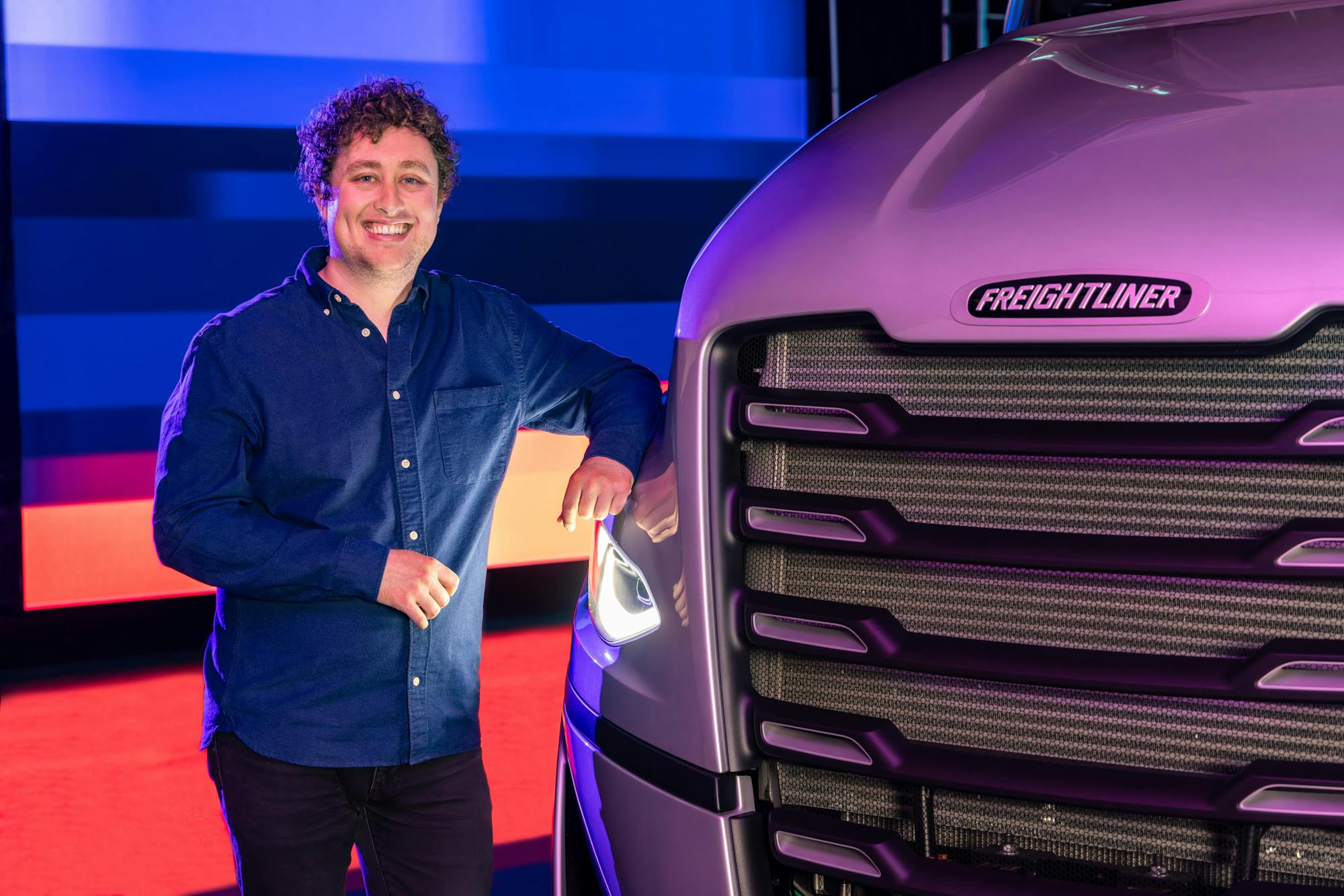
Innovations that Drive Efficiency
The pursuit of efficiency led the team to confront the challenge of aerodynamics head-on. Two significant ideas emerged from the program, according to Slocum. “The first is how to close the tractor-trailer gap, and the second is the flush door.”
Both the active side extenders and flush door reduce drag and enhance the aesthetics of the vehicle.
Not only is the flush door quieter and more aerodynamically efficient, but it could end up being a cost-effective way of improving the vehicle. “I was super excited to see it out on the road during testing,” said Slocum.
The program has also introduced several other innovations, among them a collaboration with Stoneridge to replace standard bulky side mirrors with MirrorEye®, a new camera system that integrates smoothly with the truck.
Customers have responded overwhelmingly positive to the upgrades, particularly regarding the controllable electric air conditioning, usable whether the engine is running or not.
“We added a duct in the bumper that allowed us to fit an extra radiator below the current one,” added Slocum. “This discovery opened up a whole new area for coolers, which is a useful breakthrough. It offers a range of options for electric cooling, which enables us to intelligently manage the heat from various components.”
Synergy
SuperTruck II's journey showcases the power of synergy and teamwork.
Certain advancements allowed the team to unlock other possibilities. Without these complementary elements, some of these breakthroughs wouldn't have been possible. “Consider the engine's air handling,” Villeneuve says. “Optimal air handling is crucial for efficiency.”
The integration of electric air conditioning, dynamic load shift systems, advanced tires and other technologies like electric steering enabled creation of the most advanced diesel vehicle ever made. Each component, while impressive on its own, comes together to underline the significance of the advancements made.
“We have designed the most aerodynamic vehicle in our history,” said Villeneuve. “Our focus has been on future engine technologies, and we've successfully integrated many of these advancements into the vehicle. The diesel engine we've included is the most fuel-efficient one we've ever used. Our collaboration with Michelin has been invaluable; together, we have developed highly efficient tires. Combining these efficient tires with the engine led us to explore load suspension sharing. This gave rise to the dynamic load shift – a significant enhancement. Aerodynamically, we have introduced a feature where the cab's height adjusts according to speed. This approach was also applied to the trailer, and with our adaptive tandem, we not only distribute the load effectively but also optimize tire wear, thanks to the tire advancements we've made.”
It all came together exceptionally in the end.
Slocum highlights the introduction of a turning vane duct in the bumper, which enhances both aerodynamics and aesthetics.
Playing Favorites
With so many innovations to account for, it might seem challenging to pick a favorite, but one does stand out for this team.
“The flush door,” Slocum replied quickly. “I'm really excited about the potential.”
“I'd echo Jackson and say that the exterior, the presence of the vehicle and knowing that it's the most aerodynamic vehicle and the most efficient Freightliner we've ever made – that speaks volumes to what SuperTruck II is all about,” added Villeneuve. “It's an evolution and being able to do that with common parts and a common setup – that's what’s amazing to see come to life.”
The Impact of Federal Funding
SuperTruck II demonstrates the transformative potential of federal funding.
“This type of funding empowers us to go beyond what’s immediately possible and envision possibilities a decade down the line,” acknowledges Villeneuve.
Slocum agreed, highlighting the chance to experiment with ideas that wouldn't thrive in a traditional production cycle.
The project's influence stretches across the industry. Slocum notes, “We have seen other OEMs pursuing innovative solutions to the same problems. We are all just trying ideas out beyond what we traditionally do at DTNA. We get to see all the other OEMs put forth their best effort and all their innovative ideas. The beauty of the SuperTruck program is that we are all collectively elevating industry standards.”
On the Horizon
As the SuperTruck II project paves the way for greater fuel and freight efficiency, it simultaneously sets the stage for SuperTruck III and beyond. The collaboration among engineers, designers and partners has yielded innovative advancements that will shape the future of heavy-duty trucking.
The journey from inception to realization serves as a reminder that progress isn't linear; it's a continuous exploration of uncharted territories. By embracing challenges, pushing beyond the status quo, and collaborating across disciplines, the SuperTruck II team has cleared a path toward a more efficient and sustainable transportation landscape.

